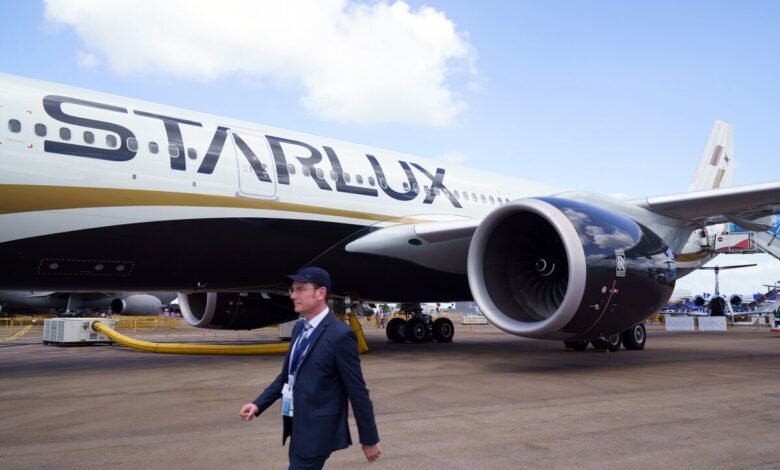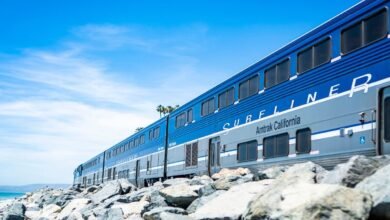Trump’s Tariffs Put Starlux’s US Travel Demand at Risk!

Starlux Airlines and the Impact of Trump’s Tariffs on Travel Demand to the U.S.
The airline industry operates in a delicate environment, influenced by various factors, including economic cycles, political actions, and demographic shifts. Recently, Starlux Airlines, a relatively new airline based in Taiwan, has expressed its concerns regarding the influence of Donald Trump’s tariffs on travel demand to the United States. This post explores how these tariffs impact international travel, specifically focusing on their implications for Starlux Airlines and the broader aviation sector.
The Rise of Starlux Airlines
Founded in 2018, Starlux Airlines aims to redefine the air travel experience by providing luxury services within Asia and beyond. With a fleet that includes state-of-the-art aircraft and a commitment to customer satisfaction, Starlux seeks to establish itself as a key player in the competitive airline industry. However, the recent geopolitical climate and trade policies, particularly Trump’s tariffs, have begun to create challenges for the airline’s growth trajectory.
Understanding Trump’s Tariffs
In the wake of rising concerns over trade deficits, national security, and economic competition, former President Trump introduced a series of tariffs on various goods imported into the United States, primarily targeting China. These tariffs aimed to deter foreign imports and encourage domestic manufacturing. However, the consequences of these tariffs extend beyond just goods; they play a significant role in shaping travel patterns and tourism, particularly from countries like Taiwan.
How Tariffs Affect Travel Demand
One of the less visible effects of tariffs is their impact on consumer psychology and behavior. Higher tariffs can lead to increased costs for goods, which, in turn, may result in reduced disposable income for consumers. When members of the public have less money to spend, discretionary spending—including travel—tends to decline. This has been a notable concern for Starlux Airlines as they try to attract travelers who are eager for a unique flying experience.
Travel as a Discretionary Expense
Travel is often one of the first areas where consumers cut back when economic uncertainty looms. Tariffs contribute to that uncertainty, especially when they drive up consumer prices. As flights to the U.S. become more expensive due to the indirect costs associated with tariffs, travelers may choose to forgo long-haul journeys in favor of more economical destinations. This shift can significantly affect airlines that rely heavily on international travel, including Starlux Airlines.
Starlux’s Strategies in Navigating Tariff Challenges
In response to the potential downturn in travel demand driven by tariffs, Starlux Airlines is focusing on a range of strategies aimed at mitigating the impacts. Here are some approaches the airline is considering to maintain their growth amidst challenging market conditions:
Expanding Regional Routes
While long-haul international travel to the U.S. presents challenges, Starlux has the opportunity to capitalize on expanding regional routes. By enhancing connectivity within Asia, the airline can attract passengers for shorter journeys. This approach lessens dependence on the United States market and allows Starlux to capture a growing segment of regional travelers.
Competitive Pricing Strategies
Starlux is likely considering aggressive pricing strategies to attract budget-conscious travelers. As costs associated with travel may rise due to tariffs, providing competitive fares for flights can help differentiate Starlux from other airlines competing for the same passenger base. Seasonal promotions and special offers can also incentivize travelers to continue flying, despite economic uncertainties.
Enhancing the Customer Experience
Starlux Airlines prides itself on delivering a premium travel experience, and maintaining this standard is critical, especially during tougher economic times. They are likely focusing on enhancing customer service, inflight comfort, and overall travel experiences to ensure that passengers perceive value in their offerings. This commitment can help the airline retain customers even if competition in the market intensifies.
The Bigger Picture: Industry-Wide Implications
Starlux Airlines is not alone in facing the repercussions of tariffs on travel demand to the U.S.; the entire aviation industry is affected. Large airlines, particularly those with significant transpacific operations, are also monitoring these developments closely. As the economic landscape evolves due to both tariffs and the ongoing impact of the COVID-19 pandemic, industry leaders will have to adopt innovative measures to navigate the evolving challenges.
Collaboration Between Airlines and Governments
In light of tariffs impacting sector demand, airlines are likely to push for dialogue with governments to address trade issues that could alleviate some economic pressures. Collaborations between airline leaders and policymakers may lead to solutions aimed at stimulating international travel through incentives or promotional campaigns that encourage travel to the United States.
The Role of Public Sentiment
Public sentiment towards travel receptivity can also play a critical role in recovery and growth. As consumer confidence resumes post-pandemic, the desire to explore international destinations may heighten. However, the lingering effects of tariffs could dampen such enthusiasm. Therefore, airlines must not only appeal to economic factors but also address consumer emotions and aspirations related to travel.
Conclusion
The aviation industry is at a crossroads, and for Starlux Airlines, the volatility introduced by Trump’s tariffs is a significant challenge. As the company aims to carve its niche in a competitive landscape while contending with external pressures, it remains crucial for them to innovate and adapt. By expanding regional routes, implementing competitive pricing strategies, and enhancing the customer experience, Starlux can mitigate some of the adverse impacts of these tariffs. In addition, the larger airline industry can explore collective solutions that involve government collaborations and positive public sentiment to foster a recovery in travel demand to the U.S.
- Starlux Airlines, established in 2018, is positioned to redefine luxury air travel.
- Trump’s tariffs impact consumer behavior, leading to decreased travel demand to the U.S.
- Travel is considered a discretionary expense and can be significantly affected by economic factors.
- Starlux is exploring strategies like expanding regional routes, competitive pricing, and enhancing the customer experience.
- The broader airline industry must collaborate with policymakers to alleviate tariff-induced challenges.
- Public sentiment and consumer confidence will significantly influence international travel trends in the future.





